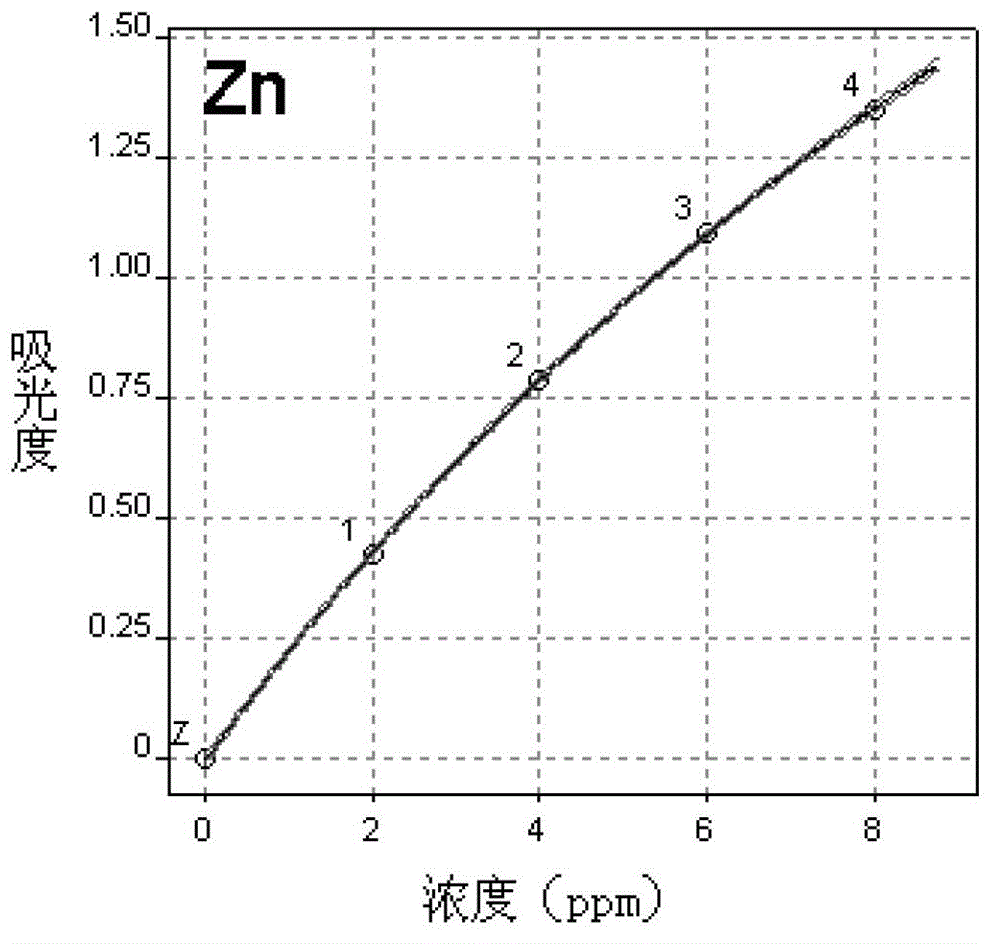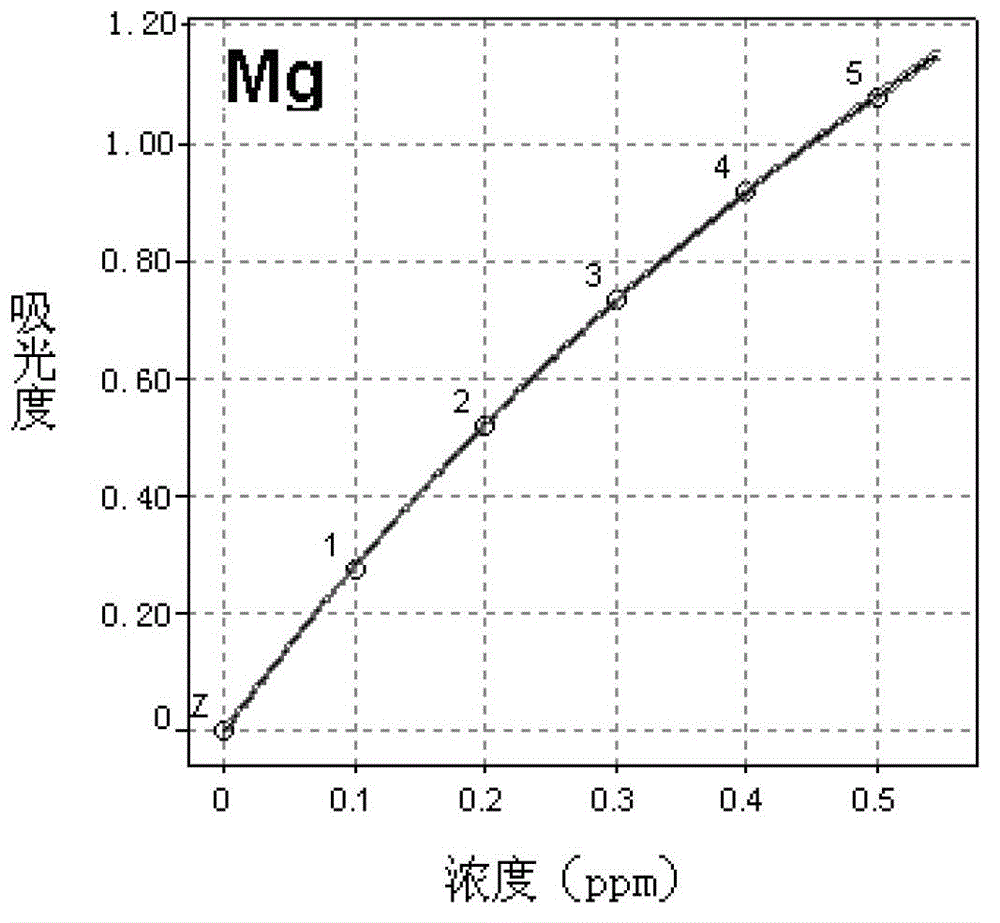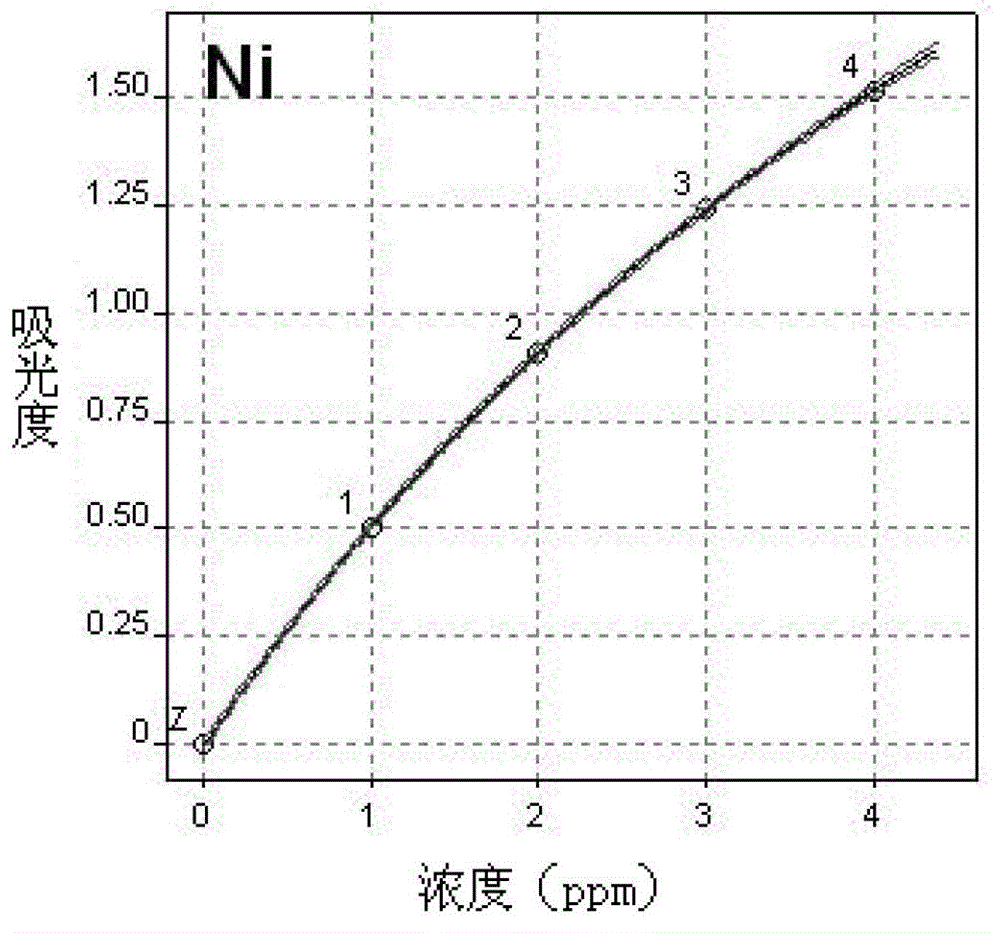Measuring method for content of metal elements in polymer resin
A metal element and determination method technology, applied in the field of chemical analysis, can solve the problems of large errors in the measurement results of metal element content, achieve the effects of small sample size, ensure safe production, and improve accuracy
- Summary
- Abstract
- Description
- Claims
- Application Information
AI Technical Summary
Problems solved by technology
Method used
Image
Examples
Embodiment 1
[0048] Microwave digestion of polypropylene resin:
[0049] Weigh 0.1053g of a polypropylene resin sample and place it in a microwave digestion tank, add 8ml of concentrated nitric acid and 2ml of hydrogen peroxide in sequence, cover the inner cover and explosion-proof membrane, and lock the outer cover. Then put it into the digester for digestion. The digestion program is pressure 40bar, power 800 watts, temperature program rises to 200°C for 30 minutes, detects the temperature and pressure of the digestion tank in real time, and the digestion program ends after 20 minutes of heat preservation. When the temperature drops to about room temperature, turn on the digestion instrument and take out the digestion tank. Transfer the acid solution into a polytetrafluoroethylene beaker, heat to remove the acid until a wet salt-like substance is obtained, add a small amount of hydrogen peroxide after cooling, and continue to remove the acid until there is no large amount of bubbles when...
Embodiment 2
[0065] Microwave digestion of polyethylene resin:
[0066] Weigh 0.1538g of a polyethylene resin sample and place it in a microwave digestion tank, add 6ml of concentrated nitric acid, 2ml of concentrated hydrochloric acid and 2ml of hydrogen peroxide in sequence, cover the inner cover and explosion-proof membrane, and lock the outer cover. Then put it into the digester for digestion. The digestion program is pressure 25bar, power 500 watts, and programmed temperature rise to 180°C for 25 minutes. The temperature and pressure of the digestion tank are detected in real time. After 10 minutes of heat preservation, the digestion program ends. When the temperature drops to about room temperature, turn on the digestion instrument and take out the digestion tank. Transfer the acid solution into a polytetrafluoroethylene beaker, heat the acid until it is nearly dry, add a small amount of hydrogen peroxide after cooling, and continue to rinse the acid until there is no large amount of...
Embodiment 3
[0078] Microwave digestion of polypropylene resin:
[0079]Weigh 0.2000g of a polypropylene resin sample and place it in a microwave digestion tank, add 7ml of concentrated nitric acid and 3.5ml of concentrated sulfuric acid in sequence, cover the inner cover and explosion-proof membrane, and lock the outer cover. Then put it into the digester for digestion. The digestion program is a pressure of 50 bar, a power of 300 watts, and a programmed temperature rise of 40 minutes to 220 ° C. The temperature and pressure of the digestion tank are detected in real time. After 15 minutes of heat preservation, the digestion program ends. When the temperature drops to about room temperature, the digestion instrument is turned on, and the digestion tank is taken out. Transfer the acid solution into a polytetrafluoroethylene beaker, heat to remove the acid until nearly dry, add a small amount of hydrogen peroxide after cooling, and continue to remove the acid until there are no large bubble...
PUM
 Login to View More
Login to View More Abstract
Description
Claims
Application Information
 Login to View More
Login to View More - Generate Ideas
- Intellectual Property
- Life Sciences
- Materials
- Tech Scout
- Unparalleled Data Quality
- Higher Quality Content
- 60% Fewer Hallucinations
Browse by: Latest US Patents, China's latest patents, Technical Efficacy Thesaurus, Application Domain, Technology Topic, Popular Technical Reports.
© 2025 PatSnap. All rights reserved.Legal|Privacy policy|Modern Slavery Act Transparency Statement|Sitemap|About US| Contact US: help@patsnap.com



